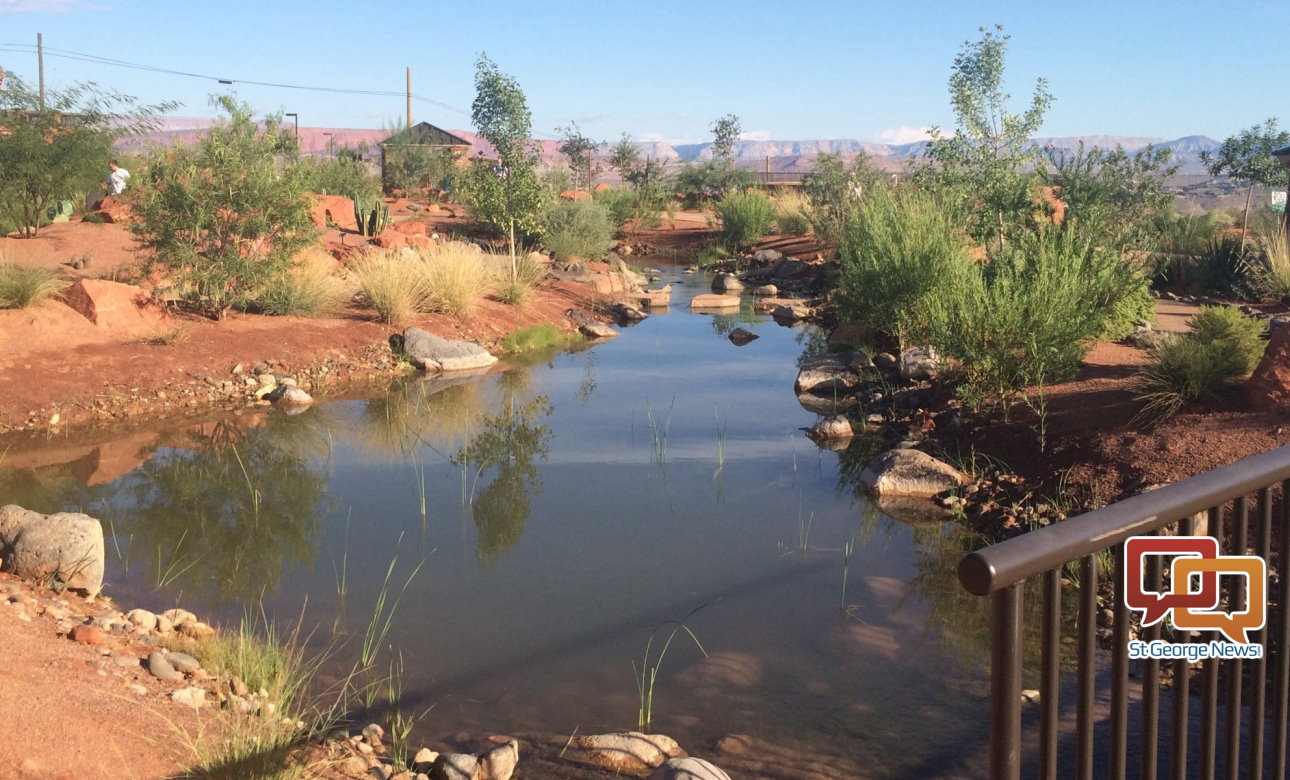ST. GEORGE — As ways to encourage water conservation are currently being explored at the state, county and municipal level, an option property owners may consider is converting traditional landscaping to more water-friendly xeriscaping.

When some people hear the term “xeriscape,” they think it refers to landscaping made of rocks and gravel, which far from true, Zach Renstrom, general manager of the Washington County Water Conservancy District, recently told St. George News
“Xeriscaping is what I would describe as a more natural, native landscaping,” Renstrom said. “There’s a variety of plants you could have. Trees are definitely included in that, but we can also go all the way to cactuses.”
Xeriscaping, which encompasses the use of native, desert friendly and water-efficient plants, has long been pushed by local civic officials and water managers as a way to help cut down on overall water use.
“You can have a 70% savings on water use with xeriscape,” Renstrom said, though added that tends to come with complete conversions to xeriscaping. Many homeowners choose to retain a level of grass otherwise, he said.
“Even than, you may still have a 50% reduction. You can have beautiful landscaping with significant savings,” Renstrom said.
It should be noted, however, is that with a change in landscaping, there needs to also be a change in irrigation habits, said Karry Rathje, a spokeswoman for the water district.

As the new xeriscape will require less water, a homeowner will need to adjust their irrigation practices accordingly by reducing their own overall water use as they are no longer watering a large patch of turf.
“Responsible irrigation is the no. 1 thing a homeowner can do to save water,” she said.
In addition to saving water, xeriscaping also requires less maintenance, Renstrom said.
Like other water conservation measures, xeriscaping has gained new emphasis in the wake of an increasingly severe drought. It has even been spelled out in legislation currently being considered by Utah lawmakers as a viable alternative to traditional lawns.
It is estimated by the Utah Division of Water Resources that up to 60% of Utah’s residential water is used for outdoor irrigation.
“Eliminating just one watering can save about 3,000 gallons for the average quarter-acre Utah yard with 0.17 acres of green space,” The division’s website states.
Now, no one is telling property owners they have to rip out their lawns, Renstrom said. However, some government agencies at the local and state level may begin to offer incentives to homeowners replace their turf with an alternative in order to save water, he said.

There has been discussion between the water district and the county’s various municipalities of about creating a countywide ordinance dictating how much, or how little, landscaping a new development should have.
The proposed ordinance would only impact new development and not preexisting homes.
Putting xeriscape into new developments is more cost-effective than ripping out existing sod and replacing it, Renstrom said. While noting that converting to xeriscaping has been cost-prohibitive for some residents,, some of those associated costs are also beginning go down, he said.
For those who are either curious about xeriscaping or want to begin implementing it at their homes, Renstrom recommends paying a visit to the Red Cliffs Desert Garden in St. George. Maintained by the water district, the desert garden features xeriscaping from beginning to end, and hosts more than just yucca plants and cacti.
It includes many flowering plants and trees that can provide shade during the heat of the summer, Renstrom said.
“You can walk around and see how green and lush it is,” he said. “There really is a wide selection of plants you can use.”

Granted, some of the plants may not be in bloom as cooler temperatures linger with the winter season, the desert garden still has much to offer someone considering xeriscape for their home.
Other locations the where the water district features water-friendly desert plants is the Garden at Tonaquint Park in St. George and the Boilers natural spring and conservation garden in Washington City.
People can also drive around town and seeing examples of xeriscaping done by other homeowners and businesses that may serve to inspire that they want to do in their own yards, Renstrom said, adding this is something he and his wife did while their home was being built.
Another place where examples of xeriscape use can be found is during the annual St. George Parade of Homes that starts Friday and runs through Feb. 27, he said.
Individuals who want to learn more about xeriscape and water-efficient landscaping in general are also encouraged to check out the water’s district’s classes and workshops, a summary of which can be found here.
Copyright St. George News, SaintGeorgeUtah.com LLC, 2022, all rights reserved.